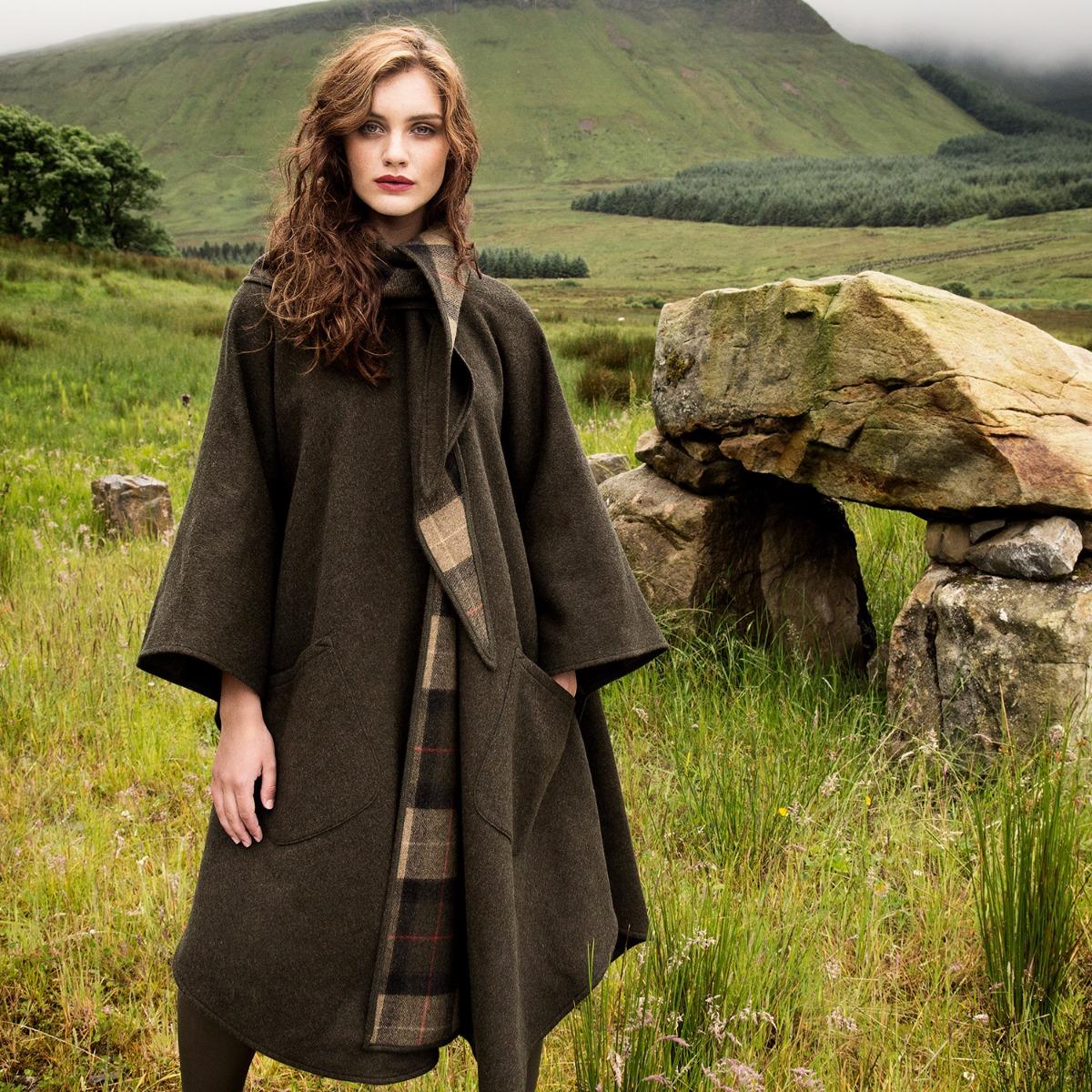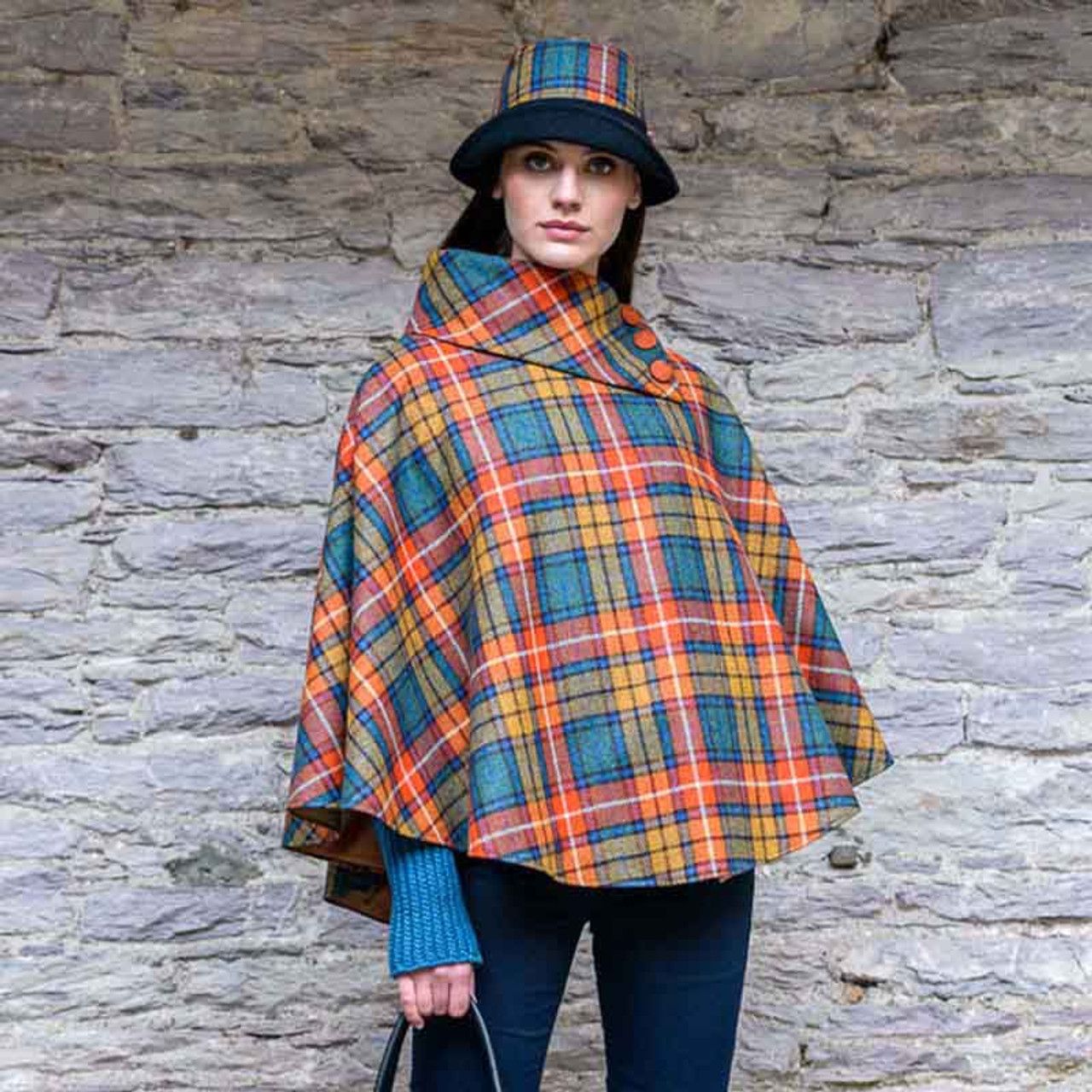
The Irish walking cape, an emblematic piece of attire deeply woven into Ireland’s sartorial and cultural fabric, has transcended its traditional confines to become a global fashion statement. This garment, characterized by its sweeping length, wide collar, and full-circle design, not only showcases the rich history of Irish attire but also the practical aspects that catered to the country’s unique environment.
Historical Origins of the Irish Walking Cape
The Irish walking cape has its roots deep in the medieval times of Ireland. While it is hard to pinpoint an exact inception date, its origins can be traced back to the Celtic people of ancient Ireland. These early inhabitants wore cloaks or capes, mainly for protection against the unpredictable Irish weather. The design of these ancient cloaks has evolved over centuries, culminating in the familiar design of the modern Irish walking cape.
Functionality: More Than Just a Fashion Statement
Beyond its aesthetic allure, the Irish walking cape was, first and foremost, a functional piece of clothing. The unique weather conditions of Ireland, characterized by sudden rain showers and cold winds, required attire that was both protective and flexible.
Weather Resistance: Traditionally made from wool, the cape offered a natural water resistance. The wool fibers, densely packed, ensured that rainwater would run off its surface rather than penetrate, keeping the wearer dry.
Flexibility and Movement: Its full-circle design allowed the wearer unrestricted movement, making it ideal for walking through the Irish countryside. The cape’s length ensured that it covered the wearer adequately, while its open front made it easy to put on or take off.
 The Symbolism and Cultural Significance
The Symbolism and Cultural Significance
Beyond function, the Irish walking cape carries a weight of symbolism and cultural significance.
National Identity: The cape has long been associated with the national identity of Ireland. It is frequently seen in depictions of Irish countryside life and has been romanticized in literature and art.
Social Status and Events: In earlier times, the design and quality of one’s cape might also be indicative of their social status. Moreover, specific styles or embellishments might be used for special events, such as festivals or weddings.
The Evolution into a Global Fashion Icon
In the 20th century, the Irish walking cape began its transition from a functional garment to a fashion statement.
Celebrity Influence: Its introduction to global audiences can be credited to celebrities and public figures who embraced the cape, showcasing it on international platforms. Such visibility gave the cape a status of sophistication and elegance.
Fashion Adaptations: Modern iterations of the Irish walking cape have played with various fabrics, lengths, and designs. While traditional wool remains popular, designers have experimented with blends and even synthetic materials. Moreover, while the classic design remains in demand, newer adaptations are tailored, shorter, or accessorized differently to cater to modern fashion sensibilities.
Care and Maintenance
Given its woolen construct, an authentic Irish walking cape requires specific care to maintain its quality and longevity.
Cleaning: Dry cleaning is generally recommended. However, if washed at home, it’s crucial to use cold water and mild detergents to ensure the wool retains its natural oils.
Storage: Store the cape in a dry place, preferably hung to maintain its shape. Using cedar or mothballs can protect it from pests.
 Purchasing Authentic Irish Walking Capes
Purchasing Authentic Irish Walking Capes
For those looking to invest in an authentic Irish walking cape, consider the following:
Origin: Ensure that it’s made in Ireland, as this guarantees a level of authenticity and quality.
Material: Traditional capes are crafted from wool. However, blends might offer different textures and finishes. Choose based on personal preference and the desired look.
Design Details: Authentic capes often come with intricate Celtic designs or patterns, either on the collar or the clasp.
In sum, the Irish walking cape is not just a garment; it’s a storied piece of history, functionality, and fashion. Its transformation from a protective cloak in the damp meadows of Ireland to a global fashion icon is a testament to its timeless appeal. Whether draped over a traditional Irish dress or paired with modern attire, the cape remains a versatile and elegant addition to any wardrobe.




















Leave a Comment